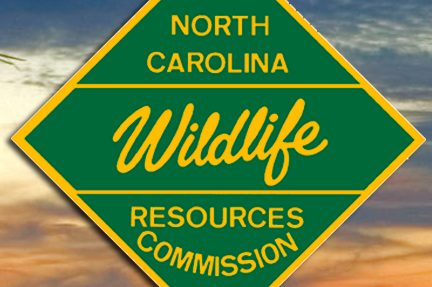Help Make Lake Gaston Even Better
ROANOKE RAPIDS, N.C. (May 25, 2016) — For a second year in a row, the N.C. Wildlife Resources Commission is asking for volunteers to help with an aquatic enhancement project on Lake Gaston this summer. Volunteers are needed on June 14-16 and July 26-29 to build fenced-in areas, called exclosures, and plant aquatic vegetation in the exclosures. Volunteers will meet at 8:30 a.m., each day. Work will be done at different locations around the lake so volunteers will need to pre-register to find out exact meeting locations for each day.
Because the exclosures will be located in shallow areas and near the shorelines, volunteers will be working in water that, at times, could reach waist high so they will need to wear water shoes that protect the feet and toes. They also should bring gloves, if they have them, for building the exclosures, and should wear sunscreen or a hat for sun protection. “This is the third year of a 5-year project to enhance the Lake’s overall aquatic habitat for sport fish, as well as people’s enjoyment of the lake,” said Mark Fowlkes, the Piedmont aquatic habitat coordinator for the Commission. “Last year, we had over 580 hours of effort between volunteer time and Commission staff hours, and installed over 4,000 linear feet of fence.” The fenced exclosures, or pens, protect the newly planted vegetation from being eaten by herbivores, such as turtles and triploid grass carp.
A survey conducted by Commission biologists in May indicated that vegetation planted in most of the exclosures over the last two years is doing well. So far, volunteers and staff have planted a variety of native vegetation, such as spatterdock, white water lily, watershield, eelgrass and pondweeds. They plant them in groups called founder colonies, which should spread to other parts of Lake Gaston, providing much-needed habitat for popular game fishes that prefer underwater vegetation – like largemouth bass and crappie. Fowlkes says planting and maintaining native vegetation with the use of exclosures is particularly important given the presence of hydrilla, a non-native, highly invasive plant, in the lake.
The Lake Gaston Weed Control Council has worked for years to control the spread of hydrilla in Lake Gaston, using a combination of herbicides and triploid grass carp. Biologists hope the native vegetation will compete with hydrilla, improving fish habitat and providing anglers with better fishing opportunities in Lake Gaston, a 20,000-acre impoundment located in Halifax, Northampton and Warren counties, along the Virginia border. The habitat enhancement project is funded through the Sport Fish Restoration Program, Lake Gaston Weed Control Council and the N.C. State University Department of Crop Science. The Sport Fish Restoration Program utilizes state fishing license money and federal grant funds derived from federal excise taxes on fishing equipment and motorboat fuels. To pre-register or for more information, contact Wally Sayko with Lake Gaston Association at wasay43@yahoo.com or call 434-636-5393
Subject

